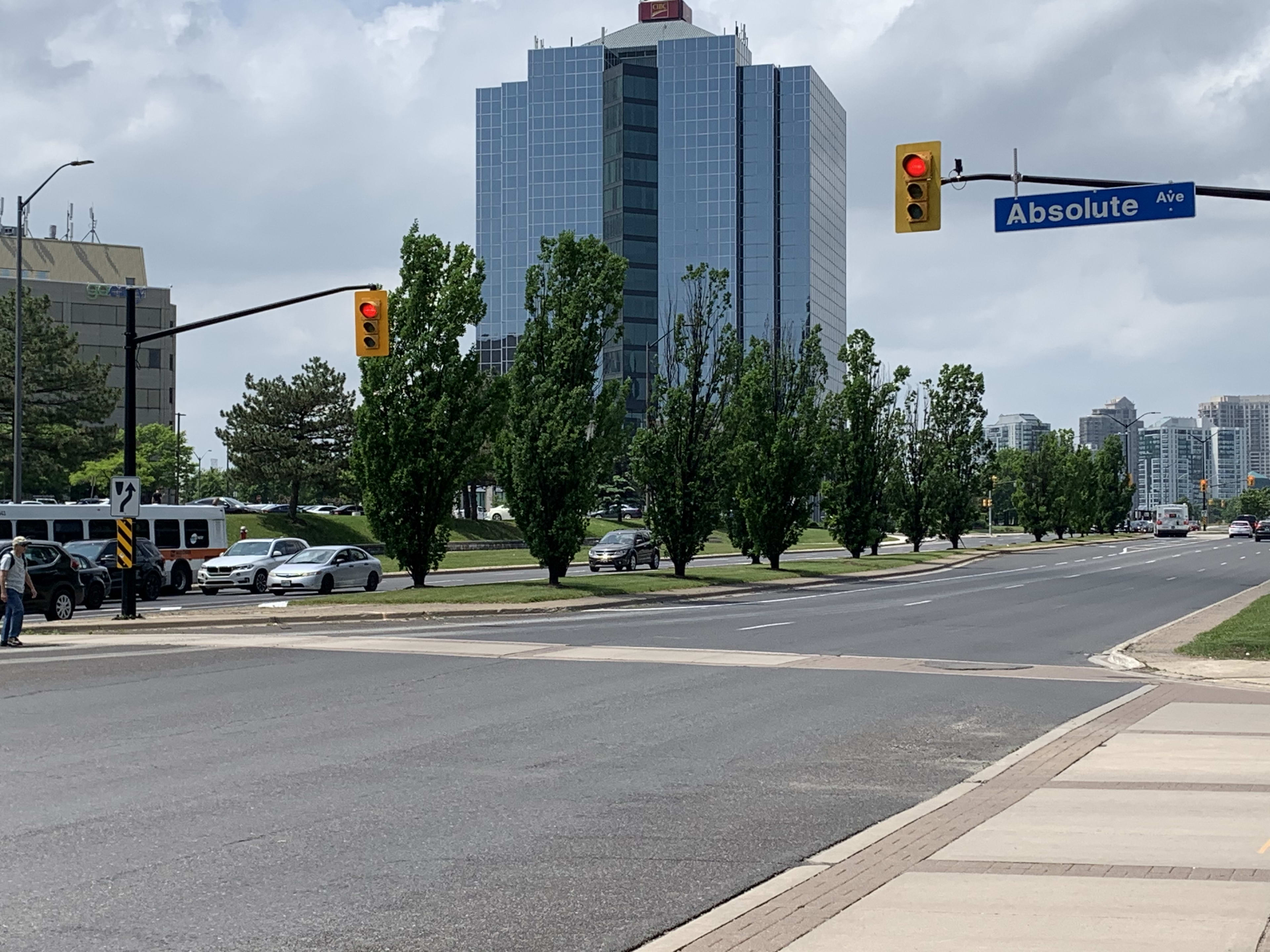How Hurontario LRVs will make up lost time and hit green lights
When Hurontario LRVs move along, they'll outsmart the traffic lights if they’re running behind.
Aug 19, 2020
For anyone who’s ever hit all red lights when driving to work after sleeping in, having a direct connection to intersection traffic signals would seem like a super power – and science fiction.
But when operational, the Hurontario Light Rail Transit system (HuLRT) will provide residents with a quick and efficient way of getting from point A to point B, thanks in large part to a Transit Signal Priority (TSP) system. The complex innovation means minimal interruptions from local traffic, and making up for lost time.
When running behind schedule, signals sent to the OCC will extend the green light at traffic signals for the HuLRT. (Metrolinx photo)
TSP uses existing light rail vehicle (LRV) location and wireless communications technologies to advance or extend the green light of a traffic signal, to allow the LRV the right of way. This system gives priority to the light rail vehicles to avoid delays and maintain route schedules, allowing them to move more effectively through Mississauga and Brampton.
So how does TSP work, and why would every car driver love one of their own?
- The LRV continuously sends its location report to the Operations Control Center (OCC)
- When the OCC determines that a train is running behind schedule, it relays this information to the Mississauga Transit Centre, Brampton Traffic Management Centre and the fire departments in both cities
- After determining that there are no conflicts with other transit systems or emergency services, the information is relayed to traffic, pedestrian, and transit signals along the corridor
It should go without saying that emergency services always get priority to do their work.
There are various types of TSPs that are used to maintain or prioritize traffic. The HuLRT TSP system will get triggered only when the system is running behind schedule. Using this approach will reduce traffic backlogs and improve overall efficiency. When the LRT system is running on time, the TSP will not be triggered.
Hurontario passengers won’t know what’s happening, or helping them, when they are suddenly on time. But a wireless bit of traffic management will hold the key to hitting the green lights.
Editor’s note – A new and improved graphic was added to this story on Sept. 22, 2020.
by Erika D’Urbano Communications senior advisor
